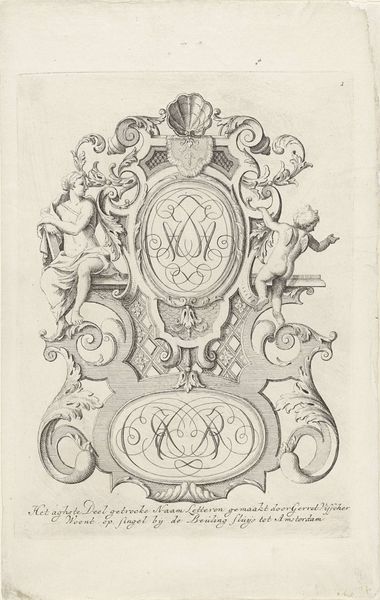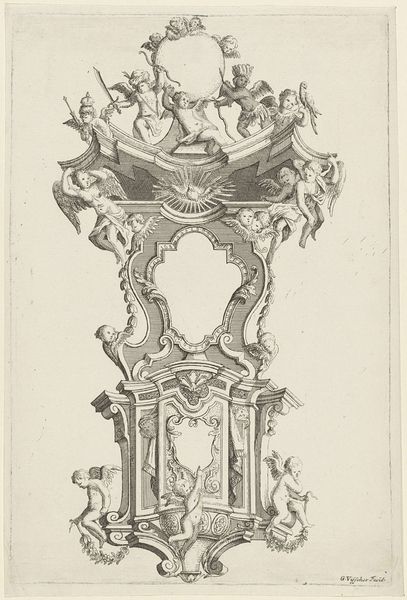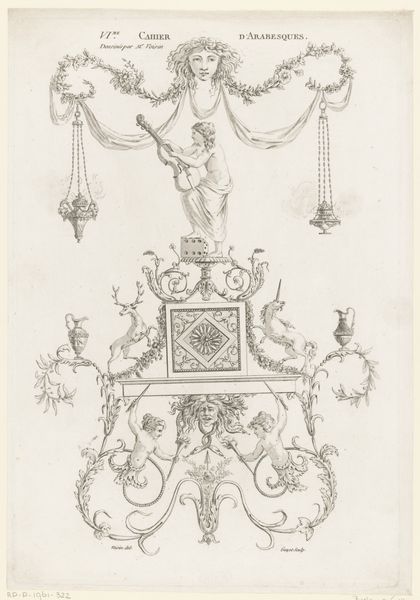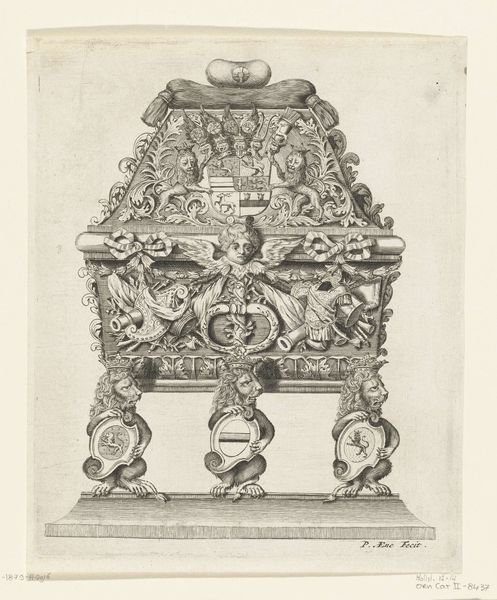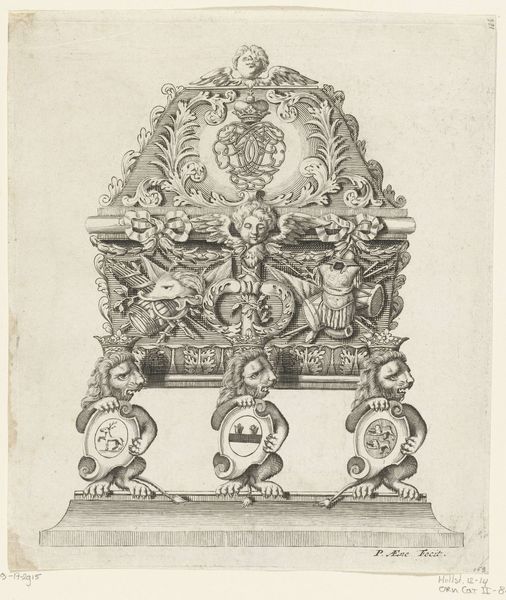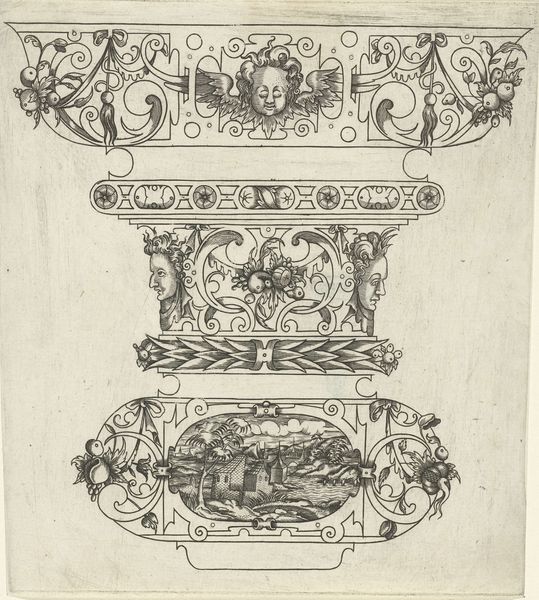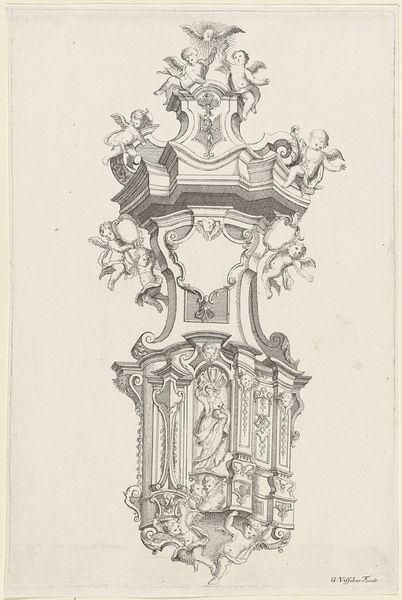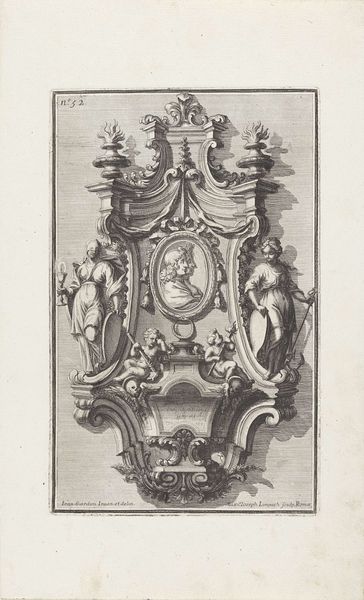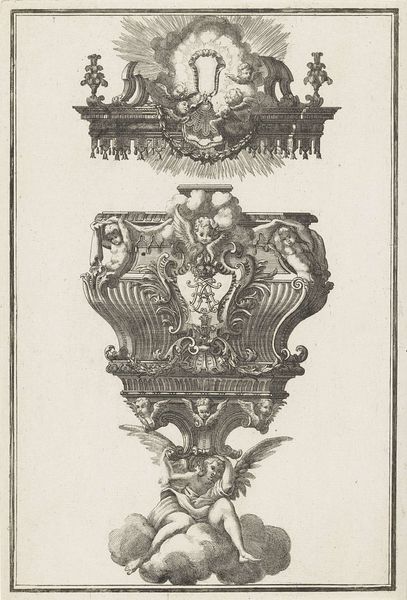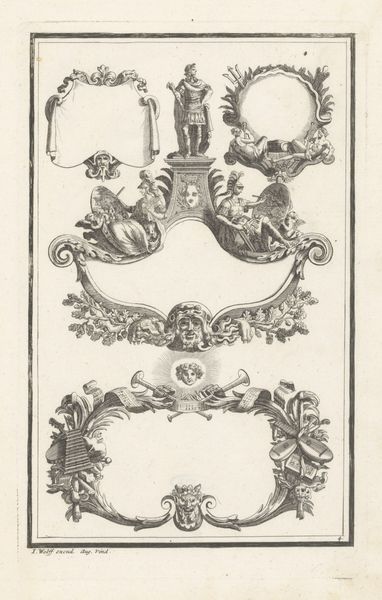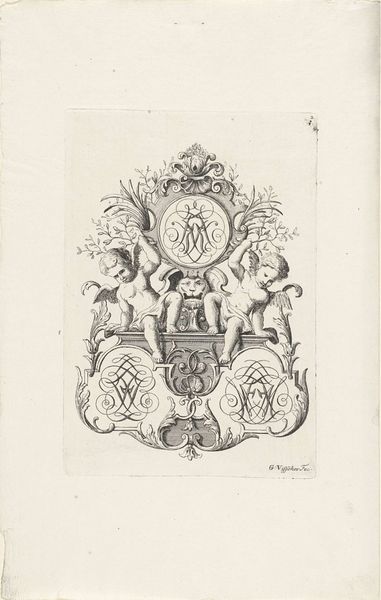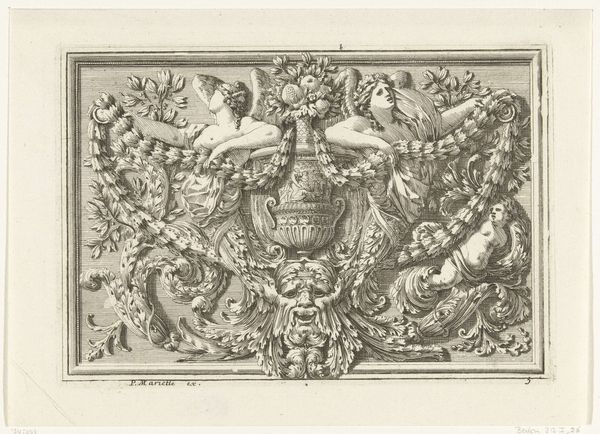
graphic-art, ornament, print, engraving
#
graphic-art
#
ornament
#
baroque
# print
#
geometric
#
line
#
engraving
Dimensions: height 233 mm, width 160 mm
Copyright: Rijks Museum: Open Domain
Curator: This print, entitled "Ornament met putti, hybride figuren en vier monogrammen," was crafted by Gerrit Visscher sometime between 1690 and 1710. It is an engraving rendered in a strikingly baroque style. Editor: It’s incredibly intricate. My first impression is a feeling of formal exuberance—the level of detail is astounding, with swirling lines and playful figures. What's the purpose of a piece like this? Curator: Objects like this showcase the period's aesthetic values and social functions. Consider how prints circulated—this design served as a model, intended to influence craftsmen and artisans. The four prominent monogrammes suggest its direct utility for someone commissioning decorative objects, personalising their environment. Editor: Monogrammes were so potent as status symbols. What about the cherubic figures—the "putti"? They are a common artistic trope, yet their arrangement seems so deliberately entwined here. What does their symbolism mean within this specific context? Curator: Ah, yes, the putti! Iconographically, these cherubs are visual signifiers of innocence and divine love, fitting well with family and personal contexts, such as birth or marriage announcements. Notice too how some are subtly rendered as hybrids, blurring human and mythical elements—very typical of baroque visual vocabulary! Editor: So it is the union between human endeavors and, shall we say, 'higher' blessings, framed as ornate extravagance! Look at those intertwined initials in the decorative cartouches. It's almost like the families are literally built into this symbolic visual framework. The underlying grid pattern anchors that flourish, in contrast with organic ornaments. Curator: Precisely. The structured geometric frame contrasting with those organic swirls epitomises Baroque tensions: reason and faith, restraint and expression, commerce and artistry all operating together within Dutch society. It also hints at underlying codes and hierarchical concerns structuring Dutch society. Editor: This wasn't *just* aesthetic—it served clear socio-political purposes through controlled imagery. Seeing it with this insight brings its complexity into sharper focus! Curator: Exactly! Art from this period reveals so much when seen as part of larger social practices and the public roles imagery occupied.
Comments
No comments
Be the first to comment and join the conversation on the ultimate creative platform.
